
ACM Transactions on Human-Robot Interaction
Scope & Guideline
Enhancing Everyday Life Through Human-Robot Interaction Studies.
Introduction
Aims and Scopes
- Human-Robot Collaboration:
Research exploring various aspects of how humans and robots work together, including task allocation, shared autonomy, and trust dynamics within collaborative environments. - Social and Emotional Interaction:
Studies focusing on the social and emotional dimensions of HRI, such as how robots can be designed to recognize and respond to human emotions, establish rapport, and foster positive interactions. - Design and Evaluation of HRI Systems:
Development of frameworks and methodologies for designing, implementing, and evaluating robotic systems that interact with humans, including user-centered design approaches and participatory design. - Robotics in Healthcare and Assistive Technologies:
Exploration of the applications of robots in healthcare settings, including rehabilitation, elderly care, and support for individuals with disabilities, aiming to improve quality of life. - Ethics and Societal Impact of HRI:
Investigations into the ethical considerations and societal implications of deploying robots in various environments, addressing issues of trust, acceptance, and moral dilemmas. - Cognitive and Perceptual Understanding of HRI:
Research on how humans perceive and understand robotic actions and intentions, including studies on cognitive load, mental models, and the effects of anthropomorphism.
Trending and Emerging
- User-Centric Design and Participatory Approaches:
An increasing trend towards involving users in the design and development process of robots, ensuring that the systems meet real-world needs and preferences. - Socially Assistive Robots:
A growing focus on robots designed to assist individuals socially, particularly in healthcare and educational settings, emphasizing their role in enhancing emotional well-being and social interaction. - Explainable AI in Robotics:
Emerging research on the need for robots to provide clear explanations of their actions and decisions, improving user trust and understanding of robotic behavior. - Ethical Robotics and Societal Implications:
A heightened awareness and investigation into the ethical implications of robot deployment in daily life, particularly concerning privacy, autonomy, and social norms. - Multi-Modal Interaction Methods:
Increased exploration of multi-modal interaction techniques, such as combining verbal, non-verbal, and sensory feedback to create richer interactions between humans and robots. - Integration of AI and Machine Learning:
The integration of advanced AI techniques, including machine learning, in enhancing the adaptability and responsiveness of robots to human behavior and preferences.
Declining or Waning
- Traditional Robotics Applications:
Research focused on conventional industrial applications and basic robotic automation seems to be declining as the field shifts towards more complex and interactive human-robot relationships. - Simple Task Automation:
Studies emphasizing straightforward robotic task automation are becoming less prevalent, replaced by a focus on collaborative and socially aware robots that can adapt to dynamic human interactions. - Static User Interfaces:
Research on static or non-adaptive user interfaces for HRI is waning, with a growing emphasis on interfaces that adapt to user needs and contextual changes in real-time. - Basic Trust Models:
The exploration of simplistic models of trust in HRI is decreasing, as the field moves towards more nuanced understandings of trust dynamics that incorporate emotional and contextual factors. - Robotic Aesthetics without Contextual Application:
Research on the aesthetics of robots that does not consider their practical applications in social contexts appears to be losing traction, as the emphasis shifts toward design that enhances interaction quality.
Similar Journals

Science Robotics
Catalyzing Tomorrow's Robotic Technologies TodayScience Robotics, published by the American Association for the Advancement of Science, is a leading journal that explores cutting-edge advancements in the field of robotics, emphasizing the intersection of artificial intelligence, mechanical engineering, and control optimization. With its ISSN 2470-9476, this prestigious journal holds an impressive Q1 ranking across pivotal categories for 2023, including Artificial Intelligence, Computer Science Applications, Control and Optimization, and Mechanical Engineering. It has garnered renowned recognition in the academic community, highlighted by its high Scopus rankings—placing it in the top tier with a 99th percentile rank in Mathematics for Control and Optimization and Computer Science Applications, and maintaining a 98th percentile in Artificial Intelligence. While the journal is not currently open access, it serves as a vital repository of knowledge for researchers, professionals, and students seeking to stay at the forefront of robotic innovations. Operating from its base in Washington, DC, Science Robotics aims to disseminate world-class research that catalyzes future developments in robotics and automation technologies, making it an essential resource for those engaged in the scientific study and application of these transformative fields.

Frontiers in Neurorobotics
Bridging Intelligence and Engineering for Tomorrow's RoboticsFrontiers in Neurorobotics is a leading open access journal that bridges the fields of artificial intelligence and biomedical engineering, dedicated to advancing the understanding and application of neural mechanisms in robotics. Published by FRONTIERS MEDIA SA in Switzerland, this journal has been disseminating innovative research since its inception in 2007. With an aim to foster interdisciplinary collaboration and share cutting-edge findings, Frontiers in Neurorobotics holds a commendable position in the academic landscape, ranking in the Q2 category for both Artificial Intelligence and Biomedical Engineering as of 2023. Researchers will find it particularly valuable due to its broad scope, which encompasses everything from theoretical frameworks to practical applications in neurorobotics. The journal is committed to open access, ensuring that its contents are readily available to a global audience, thus enhancing visibility and engagement with trailblazing research in this dynamic field.
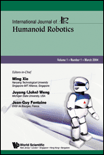
International Journal of Humanoid Robotics
Unveiling the Potential of Humanoid InnovationInternational Journal of Humanoid Robotics, published by World Scientific Publishing Co Pte Ltd, is a leading platform for researchers and practitioners in the fields of artificial intelligence and mechanical engineering. With an ISSN of 0219-8436 and an E-ISSN of 1793-6942, this journal has established itself as a significant resource since its inception in 2004. Spanning various topics from robotic design and control to human-robot interaction, it serves a diverse interdisciplinary audience. The journal’s impressive ranking in the Scopus database, positioned in the third quartile for both categories in 2023, reflects its growing impact in the academic community. Although not open access, the journal provides crucial insights that advance the understanding of humanoid robotics and foster innovative solutions to real-world challenges. Researchers, professionals, and students are encouraged to engage with this essential resource as it continues to shape the future of robotics through rigorous scientific inquiry and scholarly collaboration.
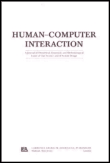
HUMAN-COMPUTER INTERACTION
Shaping Tomorrow's Technology with Today's InsightsHUMAN-COMPUTER INTERACTION is a premier academic journal published by Taylor & Francis Inc, dedicated to the interdisciplinary field of HCI, which explores the dynamic interactions between humans and computers. With its ISSN 0737-0024 and E-ISSN 1532-7051, the journal maintains a strong presence within the academic community and is recognized for its significant impact, holding a commendable impact factor that underscores its relevance. Ranked in the Q1 category for both Applied Psychology and Human-Computer Interaction, it occupies a critical position in Scopus rankings, listed as #15 in Applied Psychology and #11 in Computer Science, Human-Computer Interaction, placing it in the top 6% of relevant fields. Covering a broad spectrum of topics from usability studies to user experience design, the journal aims to facilitate innovative research and provide insights that bridge theoretical frameworks and practical applications. Published since 1985 and continuously evolving, HUMAN-COMPUTER INTERACTION remains an essential resource for researchers, professionals, and students eager to contribute to and benefit from advances in understanding how technology can effectively serve human needs.
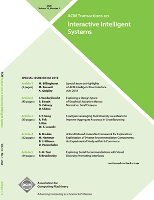
ACM Transactions on Interactive Intelligent Systems
Fostering Interdisciplinary Innovations in Intelligent Systems.ACM Transactions on Interactive Intelligent Systems is a distinguished journal published by the Association for Computing Machinery (ACM), specializing in the realms of Artificial Intelligence and Human-Computer Interaction. With an impactful presence in the academic community, it boasts a respectable Q2 quartile ranking in both fields as of 2023, highlighting its significant contributions to advancing interactive intelligent systems. The journal, identified by ISSN 2160-6455 and E-ISSN 2160-6463, encompasses a broad spectrum of research from theoretical advancements to practical implementations, offering invaluable insights for researchers, professionals, and students. The journal not only serves as a platform for innovative ideas and methodologies but also emphasizes the importance of interdisciplinary approaches in its publications. Positioned in the United States, at 1601 Broadway, 10th Floor, NEW YORK, NY 10019-7434, it stands out for its commitment to quality, rigor, and relevance within the computing and interactive systems sectors.
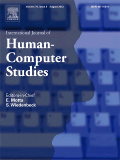
INTERNATIONAL JOURNAL OF HUMAN-COMPUTER STUDIES
Innovating the Interface of Human Experience and TechnologyINTERNATIONAL JOURNAL OF HUMAN-COMPUTER STUDIES, published by Academic Press Ltd - Elsevier Science Ltd, stands at the forefront of research dedicated to the dynamic interplay between humans and technology. With a remarkable impact factor reflective of its rigorous academic standards and its prestigious ranking in the Q1 category across vital disciplines such as Education, Engineering, Human Factors and Ergonomics, and Human-Computer Interaction, this journal serves as an essential resource for researchers, professionals, and students alike. Spanning from 1994 to 2024, it showcases pioneering studies that contribute significantly to the understanding of cognitive processes, usability, and the evolving role of technology in society. Despite the absence of Open Access options, access to this journal is facilitated through institutional subscriptions, ensuring that critical findings and advancements are readily available to a global audience. By continuing to publish high-quality research, the INTERNATIONAL JOURNAL OF HUMAN-COMPUTER STUDIES plays a crucial role in advancing the field, fostering innovation, and guiding future research directions.
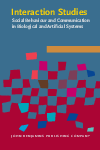
Interaction Studies
Fostering Interdisciplinary Insights in Interaction StudiesInteraction Studies is a premier journal published by JOHN BENJAMINS PUBLISHING CO, focusing on the dynamic intersections between language, communication, and technological interaction. Since its inception in 2004, the journal has established itself as a critical resource in the fields of Animal Science and Zoology, Communication, Human-Computer Interaction, and Linguistics and Language, achieving impressive rankings and quartile placements across multiple disciplines. The journal's commitment to interdisciplinary research is reflected in its Q1 status in Linguistics and Language and Q2 rankings in both Communication and Animal Science for 2023. Interaction Studies not only provides a platform for innovative research but also facilitates a deeper understanding of complex interactions in various contexts, making it an essential read for scholars, professionals, and students alike. The journal is based in the Netherlands and is accessible through traditional subscription models, with an extensive archive providing valuable insights into evolving scholarly discourses. With its robust impact and academic rigor, Interaction Studies is poised to remain a leading voice in the ongoing exploration of interactive phenomena.
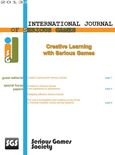
International Journal of Serious Games
Advancing the Frontier of Serious Games ResearchThe International Journal of Serious Games is a pioneering publication dedicated to advancing the interdisciplinary field of serious games and their application in various domains such as education, artificial intelligence, and human-computer interaction. Published by SERIOUS GAMES SOC in Italy, this Open Access journal has been facilitating unrestricted access to innovative research since 2014. The journal is recognized for its quality, achieving prominent rankings in its categories, including Q2 in Education and Q2 in Computer Graphics and Computer-Aided Design as of 2023. With its commitment to academic rigor, it places itself as an essential resource for researchers, professionals, and students seeking to explore the transformative potential of serious games. Housed at the IST INT COMUNICAZIONI, VILLA PIAGGIO, GENOA, the journal continues to foster knowledge sharing and collaboration across disciplines, enriching the global discourse on gaming for impact.

International Journal of Social Robotics
Unveiling the Societal Impact of Intelligent MachinesThe International Journal of Social Robotics, published by Springer, stands at the forefront of interdisciplinary research, exploring the intersection of artificial intelligence, robotics, and social sciences. With an impressive impact factor and ranked in the Q1 category across multiple fields—including Computer Science, Control and Systems Engineering, and Social Psychology—this journal provides a premier platform for scholars and practitioners to disseminate their findings and engage in critical discussions about the role of robotics in society. Since its inception in 2009, the journal has frequently featured innovative studies that address vital issues such as human-robot interaction, ethical considerations in automation, and the societal impacts of robotic technologies. While it currently operates under a subscription model, its rigorous reviews and high-ranking publications make it an essential resource for anyone interested in the transformative power of social robotics. For those dedicated to advancing knowledge in this dynamic field, the International Journal of Social Robotics serves as an indispensable reference point.
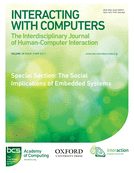
INTERACTING WITH COMPUTERS
Shaping the Future of Human-Computer RelationshipsINTERACTING WITH COMPUTERS is a renowned journal published by Oxford University Press, focusing on the interdisciplinary field of Human-Computer Interaction, as well as aspects of Library and Information Sciences and Software. With a rich history of publication since 1989, this journal has established itself as a significant platform for scholars to disseminate cutting-edge research and innovative methodologies that enhance our understanding of how humans engage with technology. Despite being classified in the Q3 and Q2 quartiles across various categories, its 2023 Scopus rankings highlight its relevance, positioning it within the 69th percentile for Library and Information Sciences. This makes it an essential resource for researchers, professionals, and students looking to stay informed about the latest advancements and discussions in this rapidly evolving domain. Though not currently open access, INTERACTING WITH COMPUTERS offers substantial insights that are crucial for driving forward the conversation in Human-Computer Interaction, ensuring its relevance in both academic and applied contexts.